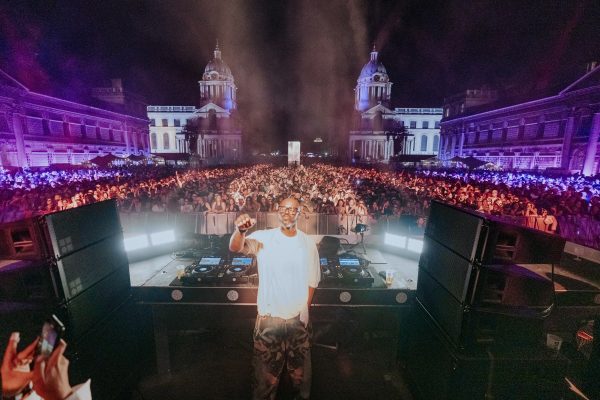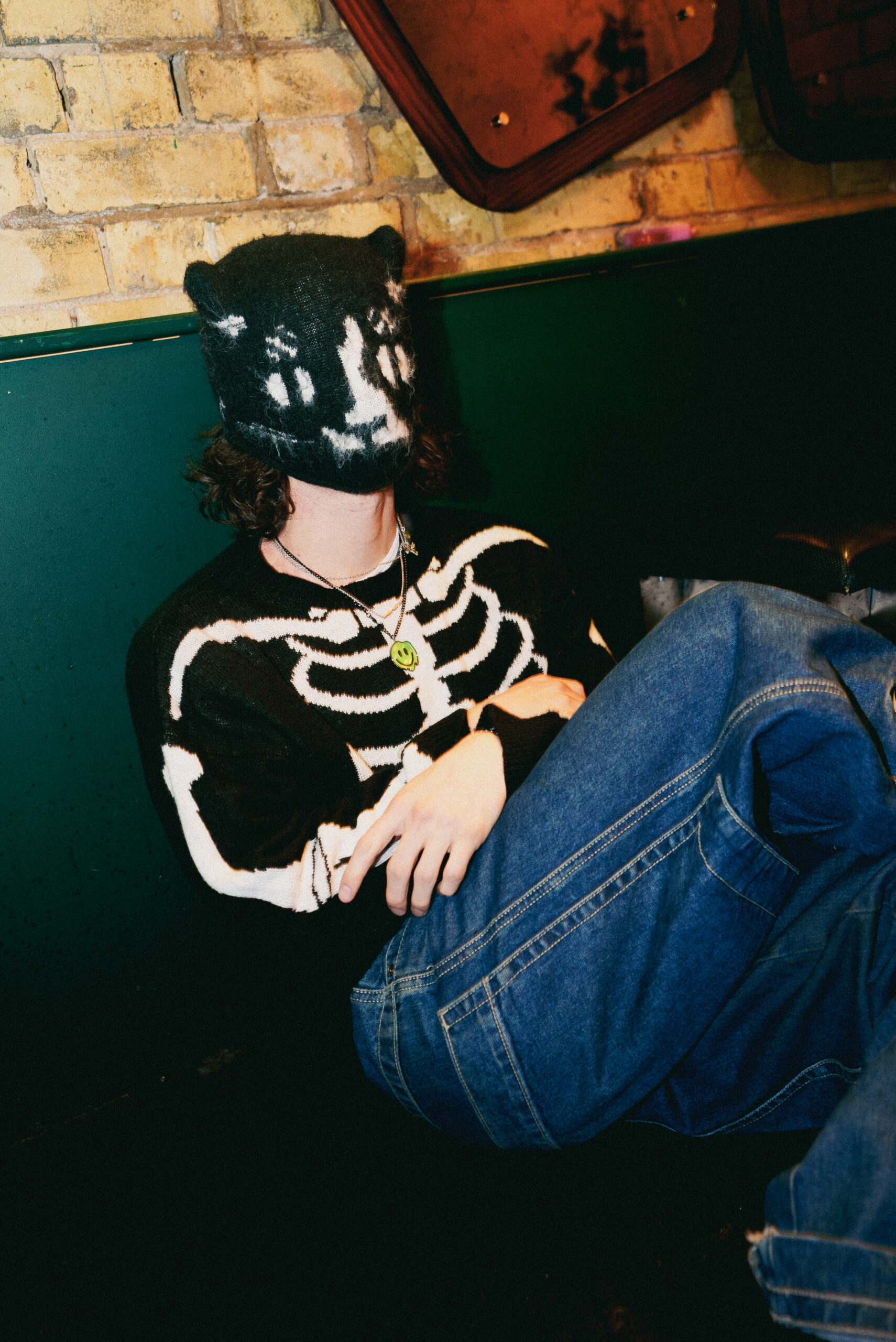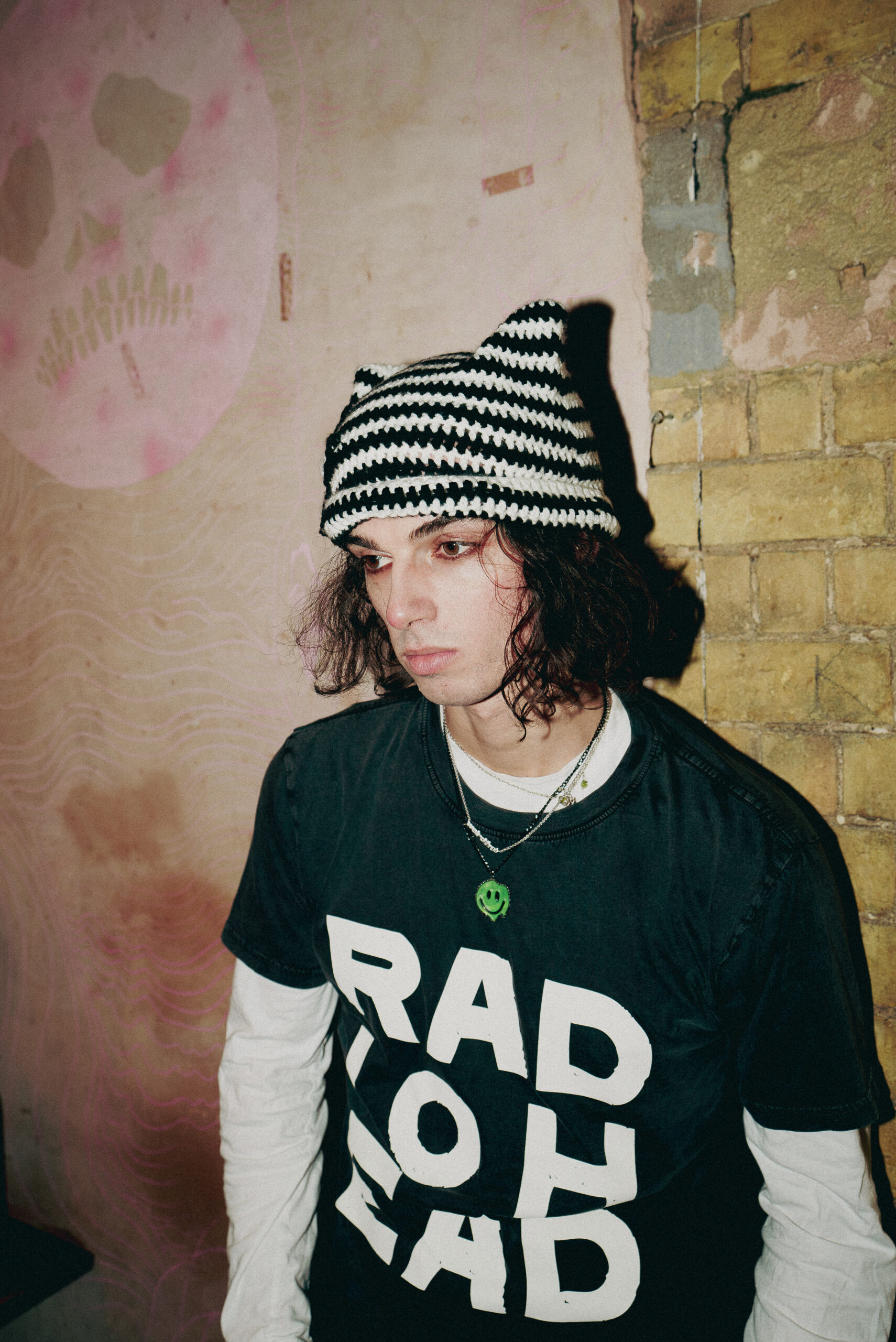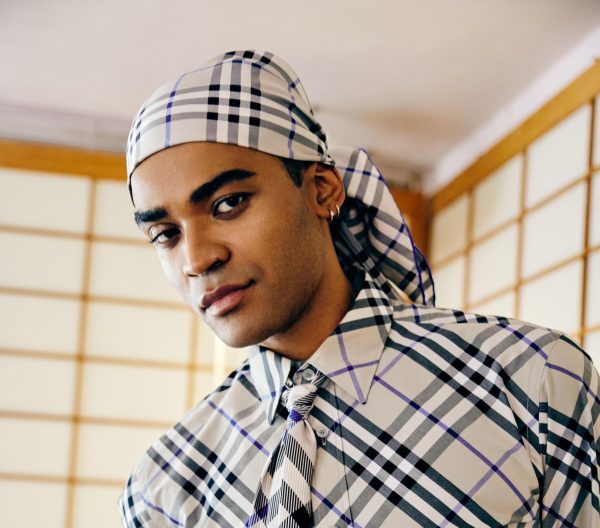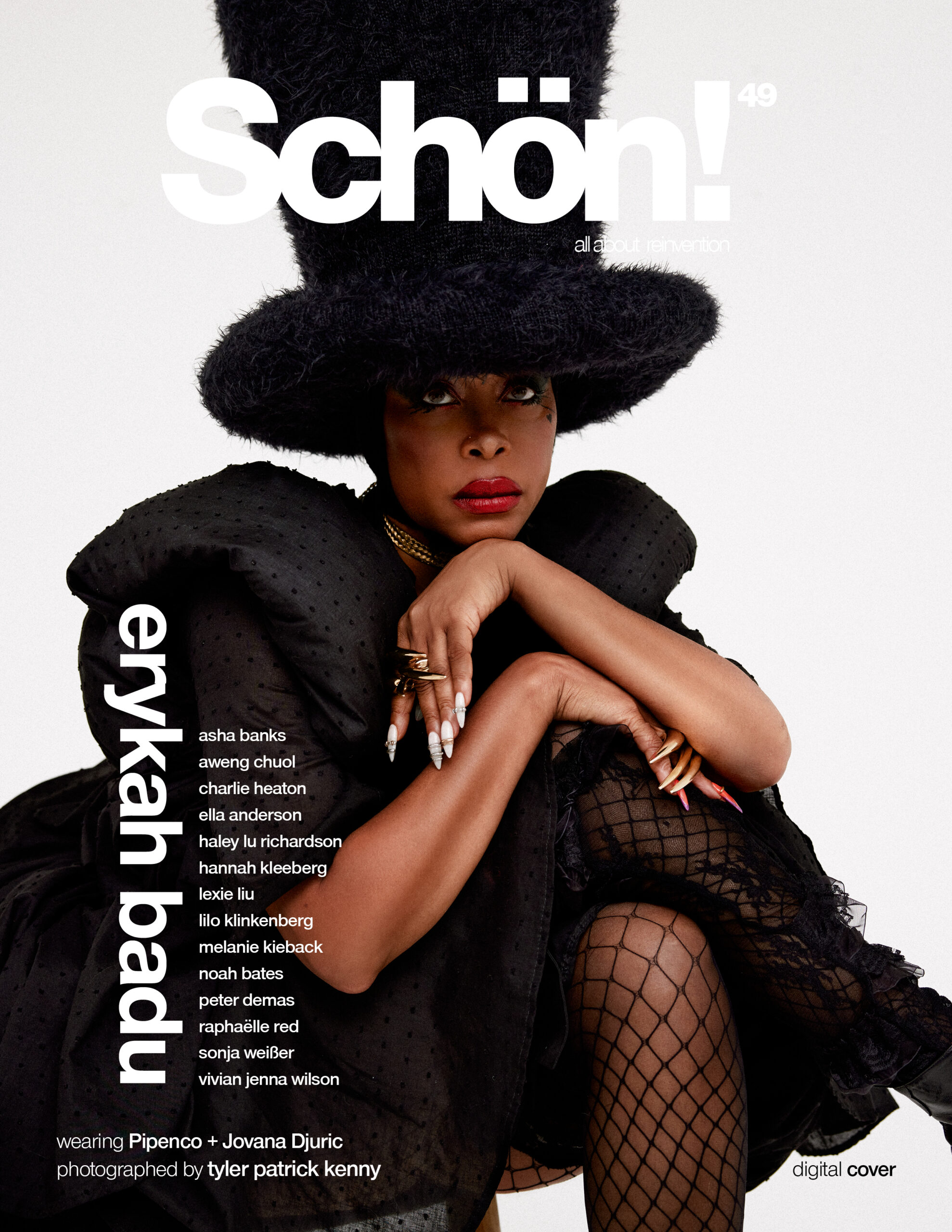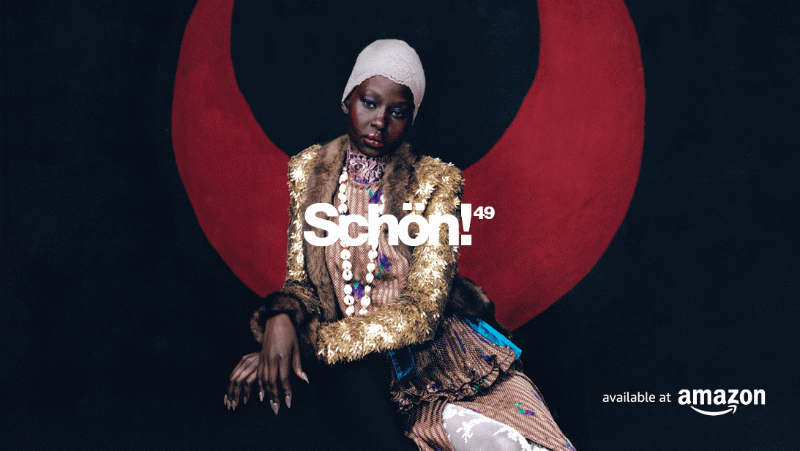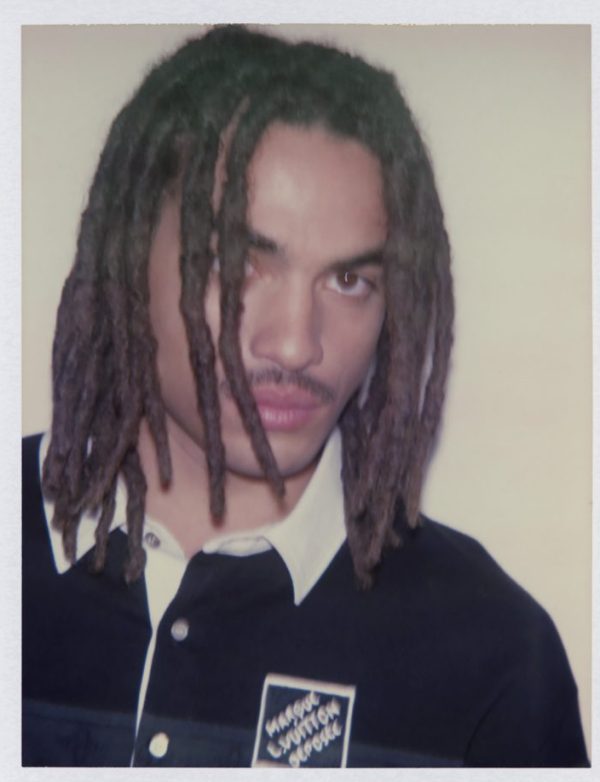
As we become more isolated and retreat deeper within ourselves, both our individual stories and power as a collective become simultaneously lost in time. Humans Collecting Memories, or HCM, a project started by Giovanni Di Giandomenico and Aladin Ilou, is an examination of this and other phenomena.
Exploring the themes that dictate our contemporary world, HCM produces art, music, experiences, and more, seeking to make sense of a seemingly nonsensical world. Their new project, Atmosfere, featuring their own music and photography by Francesca La Franca, is one of the label’s many attempts to do this. To hear more about this project, Schön! spoke with Di Giandomenico about the label and its manifold output.
What first inspired you to begin HCM?
Humans Collecting Memories was born in 2016 by a common inspiration between me [Giovanni Di Giandomenico] and Aladin Ilou. We had both moved to Berlin, just starting a new life abroad, far from Palermo and Italy.
Never before had we felt the need to connect with people and have humans around us, trying to start a new life in a completely different country with a different language, a different culture, etc. We think it’s a natural reaction. the instinct we have to not be alone. So HCM was born from the needs of others, of their stories, of their emotions, and the crossing of their lives in our experience of the world and in our exploration of ourselves.
The first starting point was looking at the inner side of ourselves. [We] started thinking more deeply about what exactly we were feeling about our experience as immigrants in Germany, and how we were processing the memories of the past in reaction or in synthesis with the present. Every album we produced was a sort of a sound diary where fear, desire, solitude, hope, love were just coming to merge in a unique global atmosphere or mood. We think memories are not something related to the past. Memories are what we now choose to remember, or what is so strong or so deep to be forgotten. We see them more like bricks of the new desires and needs, starting points for a different imagination of the future. Memories are the future because they are never the exact truth; they are beautiful lies, they are triggers of the fantasy.

How is HCM different from other labels putting out music right now?
HCM is not only a music label. [HCM] is sometimes hard to define, also for us. We like to imagine it as a platform, or a creative environment where research, information, and communion between different arts and techniques can flourish naturally. We were never fascinated by the idea of building a commercial music label because we really think the market today is not a good place for free thinkers, it’s not a place for humans. The music market tries to fulfill a request, to build a product, and to sell it. The cultural market especially lives today as a big contradiction because it tries to make culture [from] the products it has to sell. This approach cannot satisfy what we were trying to achieve. For us, being an artist doesn’t mean giving people what they are asking for, but exactly the opposite, trying to bring to people what they try to avoid. It’s a work ethic more connected to feelings than with the money. We try to propose new questions and new content. What we produce is just a starting point for everyone who wants to explore more deeply the emotional side of himself or the relationship we have nowadays with our world and with our society.
Of course, this approach needs a lot of time. We have to always be strict and severe during our research or composition procedures. Every album has a unique structure, every track, or side, has its own architecture. For example, in the first album we released, named We Need, you have the possibility to organise your listening experience of the album as you want. So it’s both a 75-minute album and a 37.5-minute track. The tracks on each side of the cassette are designed to be played simultaneously.
An extract from a review on a closer listen by Richard Allen about it:
[…] Some ways to enjoy We Need: playing one side on headphones, another on a four-channel stereo (now you’re in the middle); one side on a laptop, another on a two-channel stereo (now you’re in the foreground); two stereos, boom boxes or other outer playback devices (now everything is balanced). […]
We always wondered what kind of use to make with social media. We recently launched on our IG, @hcm.blue, with the possibility to experience virtually the sound installations we developed during the last years through the IG posts. Using Instagram grids, we recreated a virtual approximation of the sound spatialisation inside the gallery. That was an idea to offer the possibility of movement, the possibility of experiencing sound sources as during the real installations, but at your home, from your phone, I think that was a pretty nice and absolutely simple solution for experiencing live performances during the lockdown period due to the COVID-19 sanitary emergency.
What makes us different is also our approach with collaborators; we don’t commission works, we develop things with other people. That’s the reason we spend months, or years, in some cases, to find the right personality or the right sensibility for adding something more to the research. Who works with us is free to think, to create, to experiment new with things, no limits. If you respect people and their freedom, you have the possibility to achieve the best result.

HCM’s most recent project focuses on isolation. How do you think isolation affects the way we view the world?
Our research started with our desire to understand what makes people today so distant from each other. Sometimes it’s the external world that affects the way we see life. Our first studio was in an area of Berlin named Marzahn. We started writing Atmosfere there. Marzahn is in the North-East suburbs of Berlin, in the district of Marzahn-Hellersdorf. They spent 20 years building it; it’s like a huge valley made of concrete. It’s a poor area, far from the city center, and immersed in a sad mood, an alienating world. People who live there are pretty isolated. We started observing how the normal everyday routine was so different, so far from what we were used to seeing in town. There it was like people had been abandoned. If you go there you can feel it, as a general atmosphere that surrounds you completely. It’s normal to develop a sense of abandonment, it’s normal to start thinking about yourself as something useless, something that does not deserve anything. Nowadays, we are living in such hard times. All the events that are happening in America, all the absurd mess of the international cooperation between nations during the fight against the epidemic — they are natural consequences of a new way of thinking about society and about ourselves. This is a world of individuals. We are forgetting the importance of the group, the importance of abstraction, and thus the need for empathy. In our research, we interviewed Gioacchino Lavanco, Director of the Department of Psychological Sciences in Palermo, and professor of Community Psychology. His intervention was fundamental for us. He defines the human being as a nomad who travels between different groups. For him, groups are something we cannot refuse. Even if we are alone, we are still thinking about ourselves in a group dimension, in a group perspective. It’s impossible to imagine an individual without considering the group where he expresses his role and his dynamics.
We think that fear today is the most powerful enemy of contemporary society. Fear of the differences. Professor Gioacchino Lavanco gave us an interesting perspective about one of the most important aspects of Community Psychology nowadays: the importance of “empowerment”.
Empowerment means trying to make people powerful, trying to enhance the growth of a consciousness of power inside the individual. It’s interesting to observe that those techniques of empowerment were originally born exactly in disadvantaged and marginalised communities. He told us that the first who tried to apply the concept of empowerment on an entire social group was Malcolm X, for example. What’s happening now in America is not so different. Feeling marginalised and oppressed for years, feeling less important, and also sometimes feeling criminalised. We think that all those emotions, all those extreme conditions, are the main cause of the peak of emotional saturation for black communities in America. Politicians love to use fear because they know that fear forces people to assume suspicious and selfish perspectives. And this is not just a problem in America. What’s happening in Europe nowadays is pretty similar — extreme right parties rising to the top of their share, populist positions becoming the only way to control mass opinion and inhuman treatment towards migratory flows. We are isolated, that’s true, but there is a double meaning to be read in this condition. The world wants us divided, and we are progressively losing trust in others. Diversity is a huge value, and awareness of one’s strength is fundamental today if it’s shared with a common value.

In the background for this piece, you reference the Hikikomori phenomena. Can you explain this and how it relates to the work?
The Hikikomori phenomena interested us because it represented the purest example of isolation. In our research, we involved Dott.ssa Giuseppina Guttilla, supervisor in Sicily of Hikikomori Italia, the biggest organisation currently working on research and intervention in regards to the Hikikomori phenomena in Italy. She clarified many aspects of Hikikomori phenomena history.
They started to appear in Japan during the ’80s while the country was going through a radical industrial, economic, and cultural transformation. The cultural aspect is very important in Hikikomori phenomenology, and every expert we interviewed agreed on the fact that the most proper use of the term Hikikomori can be related solely to the Japanese phenomena and to its contemporary urban life/culture dimension.
Hikikomori cases, mainly young men and adolescents, progressively start to close every connection with the world outside until they are in complete isolation, confining themselves to the space of their own room, often with no contacts even with the family members. According to Gioacchino Lavanco, there are two main causes of explaining these phenomena. The first one is that Japan presents the central importance of work as the fundamental basis of the affirmation of the individual. Japanese identity is founded on work identity. The other reason is connected to the huge impact that new technologies had on Japanese urban society. Normally the socialisation element implies enormous effort, for everyone. We live in cities that naturally hamper and degrade the social dimension. You have to move, to cover big distances, you have to spend money, you have to talk, you have to interact with unknown people or deal with unexpected events. Technologies often try to propose a more simplified model of life. Use of avatars, for example, or online shopping, even working from home leads to retirement from social interaction.
[…] Dating apps: filtering people according to physical parameters and general preferences of interests allows me to know, before I even meet you, that I already like you, you correspond to a model that I approve. I already know what tastes you have in advance, therefore we do not need to discover and compare ourselves. Less effort. Such a model of society greatly favors retirement tendencies from socialisation. […] (P. Gioacchino Lavanco, Palermo 9th October 2019, Università degli Studi di Palermo)
Phenomena like Hikikomori seem to be a natural consequent behavior of everyday life in megalopolis, but the scary thing is to observe similar phenomena in our local environment, like in Palermo, smaller towns and cities with an apparent high level of socialisation. That’s why we started our research in our native city because we think the problem is deeper; it’s not the extreme difficulty in socialising or the natural condition of the city to avoid social aggregators. Isolation has a different face in Palermo. It is a conscious rejection of society, a rejection of a community that does not welcome and justify the difference of the individual. And this is the aspect we wanted to face in Atmosfere. There is not a right way to be. There are only atmospheres, only humans, all different and all precious.

When you’ve settled on a theme like this, how do you design your physical product around it?
We consider the physical product as a fundamental part of the general release, like a physical body for the contents. That’s why it’s important for us to think about what kind of material, what kind of packaging we want to create. We release limited editions of physical products because we don’t want our products to be just serially reproduced units. They are unique pieces for the listeners. It’s more an artisanal way to think of the product, far from the mainstream music business approach.
The packaging of Atmosfere was developed by Edizioni Precarie, a female artisans collective based in Palermo, using only layers of recyclable food paper. It’s the same paper used in popular markets in the city. They crafted several layers in an origami structure. The experience of the packaging is a sort of introduction to the mood, to the entire atmosphere of the album. You have to open it by progressively removing all the layers. That’s why we chose three different textures of paper. The external one, more resistant in waxed paper, is like a shell, the first wall you have to destroy to penetrate a condition of isolation. The inner one is very fine, just a delicate layer, thin as a more intimate and subliminal protection of your inner world.
We also chose to print our first releases on tape cassettes. This approach leads to another aspect of our production aesthetics: our sound. We are pleased to think that the listener can have an immersive sonic experience with the most evocative sound possible. Tape was the best support, conveying warmth, providing a naturally blurred noise around the soundscapes we designed. That’s why we only collaborate with mixing and mastering engineers who are deeply respectful toward those details. We don’t like what the ‘loudness war’ has done in the mainstream music market. Majors want powerful sounds, compressed dynamics, the possibility to diffuse through every kind of reproduction support. We are more connected to a classical music production aesthetic. We love to preserve the dynamic range, to exaggerate the importance of silence in order to achieve a concept of sound completely different from the one available on the market nowadays. Every album presents a collaboration with a different musician and specific research on different instrument categories. That’s why for every production we set up a different schedule and an original protocol for the composition process and the electronics processing. Every theme, every concept suggests the right solutions to build around the music structure. Every detail has to be selected for a reason. The power of ideas is a bit underestimated nowadays.
Our tapes are the result of this effort to achieve the defined image of an idea. We put the narrative as the main element of everything. We tell a story through the sounds, the physical reproduction support, and also through the packaging itself.

How did you connect with Francesca La Franca? What was the process of including her work in the project?
The contact with Francesca happened randomly; coincidence and randomness in meetings with collaborators are factors that we believe have been decisive, and to which we have entrusted ourselves a lot by letting them flow and giving them space and value in the process of creating Atmosfere. They helped us detach ourselves from our unilateral perception of the issue during research and production. Subjective perception can sometimes bring confusion, and it can be self-referential.
Aladin, at that time, was following the production of the Christian Dior Cruise Show with Frank Rynne, manager of the Master Musicians of Joujouka, traditional Moroccan Sufi orchestra who performed live with The Orb during the Dior defilè. Back from Morocco, he entrusted the editing of some of his backstage shots made for the show to Francesca, a job that was carried out remotely. The result of this first collaboration triggered in Aladin a curiosity about Francesca’s visual conception and how she was able to convey a very original and strong identity and approach to the images. He decided to discover more about Francesca’s artistic world. Later in Berlin, Aladin invited her for a meeting and he proposed our project to her. The first aim was to understand how to produce her visual interpretation of Atmosfere, leaving Francesca free to express her visual aesthetic but being inspired by the music at the same time. A strong enthusiasm emerged during the meeting as well as the desire to collaborate all together. Aladin noted a strong adherence to our themes and the same type of existentialist, oneiric and symbolic approach in Francesca. The creative process took about 6 months, and it was developed between Palermo and Berlin. She came to Palermo for four months and together we defined the work guidelines. Francesca started listening to our music, and she was selecting different vibes and moods, starting to think about the different nuances of the photo series. She intended to create a general light, a unique conception of the space, and a specific photo shooting setup for every subject.
Francesca has recreated a complex system of symbolic moments that interact reciprocally and chorally in the pictorial construction of a multi-layered polyptych via multiple panels of chromatic variation, use of voluntary segmentations of the negatives, deconstruction of the body and abstraction of space. Through painstaking care, she transported the emotional sphere of the portrayed characters into an anti-narrative. She takes the observer‘s eyes into a motionless tale inscribed in every character’s stare or stance, as it is crystalised there. She petrifies moments of isolation, visually recreating the solitary dimension of an interrupted gesture, a scattered feeling. Capturing, immortalising and spreading it in an unquantifiable time, she finally renders an eternised atmosphere. Through this lens, Francesca is able to convey both a feeling of discomfort and solitude.


What can you tell us about “Attempt to Fly”, another HCM project?
Attempt to Fly is an album by Human as Possible where I and Aladin collaborated with Marcello Cangemi (the same trio of the first release on HCM, We Need). It was developed as a study on the radical improvisational process. We were preparing a live performance in Berlin after our last audio interactive installation, UNO, was realised together on Cashmere radio during the Vorspiel/Transmediale festival in Berlin in 2017.
The live performance had to be purely analog without DAWs and any kind of digital support. We spent weeks during rehearsals to achieve an interplay between us. We see this album as a sort of sequel to Atmosfere. It’s like an answer to the questions we were researching during the development of Atmosfere itself. The inspiration turns around the central idea of aspiring to something unrealistic and the consequences that the entire process involves. Attempting to fly naturally entails a risk of falling. This fascination with instability was the main source of inspiration.
The cassette tape is housed in hand-crafted canvas packaging. Each pack is a unique puzzle-module of the general entire image of the painting. Every pack is hand-numbered and hand-sewn. The artwork painted on the canvas was created by Memo Vithana, a Berlin-based painter. He painted a hand trying to avoid any perspectives of observation. You don’t know if the hand is rising up, flying or if it’s falling down. The idea of the puzzle was interesting because it connected us to the previous release, to Atmosfere. The unrealistic possibility that all the owners of the single modules could come together and recreate the entire image of the hand was for us the perfect explanation of the idea of researching the others because inside the others we find another piece of ourselves; we can build a common sense and a shared living narrative.

Finally, do you have anything else upcoming for HCM?
We are now finalising our research about isolation and Hikikomori; in the future, it will be released as a detailed report with all the complete interviews done in Italy during the last months. We are working at the same time on new research that involves the fashion world dynamics and the link between the concept of lux in haute couture and the proposition of a personalised product. It will be a kind of parody of the big music majors world as well and its attempt to completely dehumanise the role of composers, musicians and producers. Palermo is always our main ground of inspiration and of research, and we are working now on the development of a multimedia/transmedia release that has also involved a movie production and many interviews and researchers with important personalities from DIA departments (Anti-mafia Investigative Directorate).
For us, HCM is a melting pot between two different identities. Me and Aladin we work with total respect for our independent points of view and with deep support of each other’s individual projects. Aladin, with Moroccan cultural origins, is conducting research about musical traditions and cultural heritage started in Morocco and is now extending the perspective to the MENA area. And me, I am focusing now on the finalisation of my first lyric opera with a new composition format.
HCM is the diary we use to communicate with other humans. That’s why we are proud of it as a free space of creation, with no specific marketing goals but with a strong respect for the existential contents we treat and with a fervent desire to imagine new worlds and new narrations, starting from the blurred and indistinct profiles of our memory.

This Schön! online exclusive has been produced by
photographic collection-series. Francesca La Franca
Palermo – Berlin
March – September 2019
inspired by. atmosfere by BORROMINI
words. Braden Bjella


Schön! Magazine is now available in print at Amazon,
as ebook download + on any mobile device































































